
Pennisetum: buyer's guide
Our tips to help you make the right choice
Contents
Pennisetum, or ‘fountain grass’, is an original grass that charms with its summer or autumn flowering in long fluffy spikes and with its fine, architectural foliage. This grass, very popular in recent years, is a wise choice for dry ground.
Both wild and structural, it is widely used by landscapers to give movement, lightness and brightness to small or large sunny spaces.
Genus Pennisetum includes many species and varieties, most of them hardy and easy to grow. Colour of inflorescences or foliage, flowering period, size, hardiness… there are plenty of criteria to consider to find the ideal variety. What sets them apart? How to make the right choice?
Follow our buying guide to choose the variety that will best fit your garden or terrace!
→ Also discover our ideas for combining Pennisetums
Choose by flowering time
Long silky spikelets, 8 to 40 cm long, stand upright in summer or autumn, from June to December, depending on species and variety. Among the earliest Pennisetum, Pennisetum massaicum ‘Red Button’ offers a pretty, dark‑red, slightly quirky flowering, earlier than that of common varieties. Pennisetum incomptum is also attractive from early summer because of its early flowering.
Meanwhile, Pennisetum alopecuroides ‘National Arboretum’ is a late‑flowering variety that is generous. With its purple‑violet bottlebrush‑like flowerheads, it brings grace to borders from late summer through to October–November.
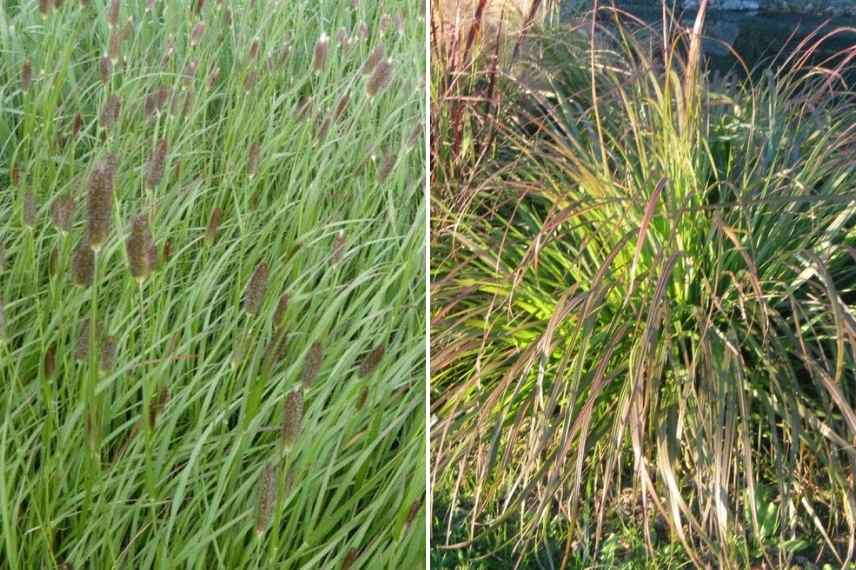
Pennisetum massaicum ‘Red Button’ on left, and Pennisetum alopecuroides ‘National Arboretum’ on right
Read also
Grasses: which variety to choose?Choose by hardiness
Perennial and hardy in most of our climates, some Pennisetum species prove more tender and are grown as annuals in cool climates. Pennisetum alopecuroides and their cultivars are the hardiest, standing firm down to -25 °C in very well-drained soil.
Pennisetum villosum and Pennisetum thunbergii display lower hardiness (-5, up to -10 °C in very well-drained soil), they are most often grown as annuals in cold regions. They are species well suited to mild climates and relatively dry summers.
Among the most tender, Pennisetum setaceum does not tolerate sub-zero temperatures, so it is grown as an annual in flowering pots or in rockeries.
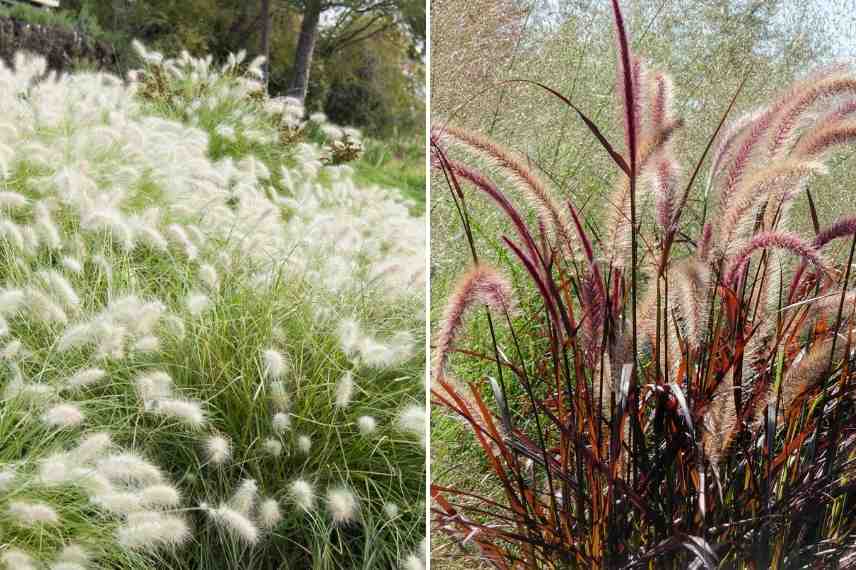
Pennisetum villosum on left, and Pennisetum setaceum ‘Rubrum’ on right
Discover other Pennisetum
View all →Available in 0 sizes
Available in 6 sizes
Available in 3 sizes
Available in 2 sizes
Available in 2 sizes
Available in 3 sizes
Available in 1 sizes
Available in 2 sizes
Available in 3 sizes
Available in 3 sizes
Choose by spike colour
These airy bottlebrushes present a variety of shapes and colours. Their flowering is all in subtle shades, without garish hues. With spikes often showing muted, brownish or silvery tones, a few skilfully placed tufts of pennisetum temper vivid colours in bright summer compositions. Cream-white with brown reflections in the Pennisetum alopecuroïdes ‘Hameln’, silvery-white in Pennisetum orientale ‘Tall Tails’, brown-black in ‘Black Beauty’ and ‘Moudry’, brown with grey sheen in Pennisetum alopecuroides f. viridescens, pink-beige in ‘Karley Rose’; red-purple in Pennisetum setaceum ‘Rubrum’ and Pennisetum thunbergii.
Spikelets sometimes have an unusual appearance for the genus, less cylindrical and more tapered (Pennisetum macourum) or sometimes topped by a tuft (Pennisetum alopecuroides ‘Japonicum’, ‘Magic’).
Colours will be more or less intense depending on sun exposure. Across all varieties, silky tufts mature to often paler, blonder tones.
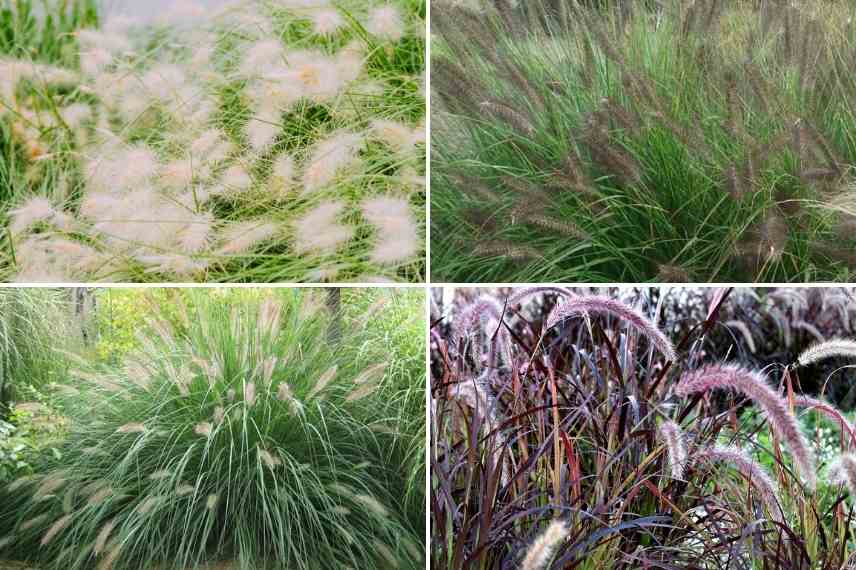
From top left to bottom right: Pennisetum alopecuroides ‘Hameln’, Pennisetum ‘Moudry’, Pennisetum alopecuroides viridescens, and Pennisetum setaceum ‘Rubrum’
Read also
6 grasses for potsChoose by foliage colour
Deciduous or evergreen foliage in warm regions forms a fountain of ribboned leaves that remain graphic even in winter. There is little range of colours in their foliage; most Pennisetum carry green leaves, yet they offer a wide palette of nuances. A whole series of very luminous cultivars exists. They allow countless combinations with other perennials and grasses. Foliage is often marcescent: it dries but persists through winter, taking on a lovely straw-yellow tone or flaming red and orange highlights in autumn.
Greens
The Pennisetum alocuperoides ‘Hameln Gold’ is a very pretty variety with very fine, lemon to golden foliage that does not scorch in sun. The yellow tint of the foliage intensifies with the arrival of autumn, colouring orange in sun. It brings great brightness to sunny borders, in contemporary or natural-style gardens.
The Pennisetum orientale ‘Fairy Tails’ forms a handsome clump of soft leaves of a slightly grey-green, topped by very beautiful pale pink inflorescences with silvery hints.
The Pennisetum alopecuroides ‘Cassian’ is a small variety remarkably luminous under low sun. Attractive from spring to autumn, it forms a pretty fountain of very fine foliage, a lovely green in spring that adopts beautiful autumnal colours, turning bright red and orange.
The Pennisetum massaicum ‘Red Button’ is a modest-sized variety that forms a clump of foliage of a very fresh, light and vivid green. Floriferous culms tinged with purple emerge from this vegetation in harmony with the purplish-red flowering.
Purples
Foliage of Pennisetum setaceum ‘Rubrum’ is entirely coloured in purplish-red to chocolate. Colour intensity varies with exposure: in sun leaves may appear almost black, in semi-shade a rich purplish-red. This annual variety is interesting for its exotic yet elegant aspect.
Choose according to intended use
Essential and versatile, Pennisetum fits well in a rockery, a border, along a path or in flowering containers. Some species can also be used as groundcover or to hold a dry slope. Quick overview of possible uses!
On a slope
Pennisetum are mostly tufted grasses, that is, they expand to form dense, compact clumps without ever becoming invasive. But some, few in number, spread from a running stump and can be used as groundcover. A useful asset in a large natural garden or in a meadow. Turn to Pennisetum incomptum, a vigorous species ideal for landscaping difficult areas, for holding a dry slope for example. At 1.20 m tall, it will quickly colonise large open areas and natural zones with its erect habit.
In large borders
Reaching 1.80 m, Pennisetum macrourum is one of the largest in the genus. Highly architectural, it is perfect for large spaces and for harmonising extensive sunny borders when paired with tall perennials in milder regions, as it likes heat. It is therefore difficult to keep as a perennial in northern France.
In a mixed border
If you want to punctuate a specific area, opt for varieties that stay neatly in place, gradually filling out and easy to slip into beds of annuals and perennials or into a flower bed.
Pennisetum add movement and naturally structure a planting, even in the smallest gardens. Choose varieties such as ‘Goldstrich’ that maintain a medium size (50 to 80 cm in height) and that will form flexible, upright clumps over time. They will showcase many perennials without ever outshining their neighbours.
In containers
One of Pennisetum’s great qualities is adaptability to cultivation in containers or window boxes on a terrace, balcony or small town garden. Provided you choose non-running varieties that are easy to contain. Place pots slightly elevated, suspended for example, to enjoy the attractive effect of their slightly arching foliage.
Among varieties particularly elegant in containers, Pennisetum alopecuroides ‘Little Bunny’ is a dwarf cultivar 20 to 30 cm in height and width. It is a delicate little variety with silky beige-pink spikelets and flexible, slightly arched culms.
The clumps coloured from deep red to chocolate of Pennisetum setaceum ‘Rubrum’, the best-known of the annual Pennisetum, will adapt perfectly to an exotic but ephemeral setting.
You can also combine several small cultivars (Pennisetum orientale) in a large container to create compositions remarkable for their elegance and airy grace.
With its acid-green foliage, Pennisetum alocuperoides ‘Hameln Gold’ brings a bright, very graphic touch to containers.
→ Read also: Pennisetum: best varieties for pots.
Choose by ease of cultivation
Pennisetum is a robust grass in most of our regions. Although your choice will depend on aesthetic criteria, ensure chosen variety is easy to grow. Indeed, in mild climates all Pennisetum grow without difficulty, whereas in harsher climates we recommend choosing a very hardy species, otherwise you may not be able to keep it as a perennial. Pennisetum alopecuroides are the most widespread in our gardens; they are also the hardiest and the only ones to tolerate the widest range of growing conditions. They are versatile and will thrive in almost all soil types except waterlogged ground that suffocates the roots. In a small space, also beware of species that are difficult to contain, such as Pennisetum incomptum, which is running.
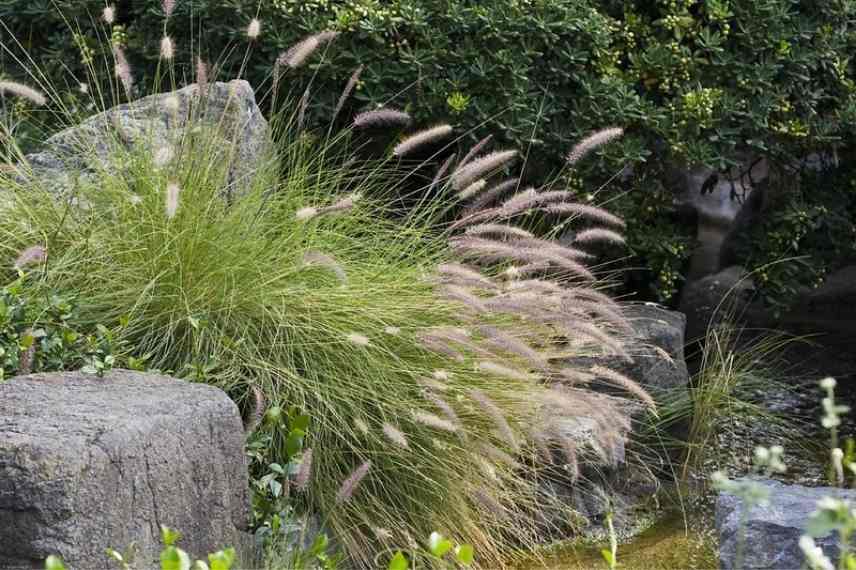
Pennisetum alopecuroides (Photo: Allan Hack)
Learn more
Discover all you need to know about this popular ornamental grass: “Pennisetum, Bottlebrush herb: Planting, pruning, maintenance” and some ideas for combining it with Pennisetum!
Visit our online nursery to choose species and varieties of Pennisetum perfect for your garden or your terrace!
- Subscribe!
- Contents
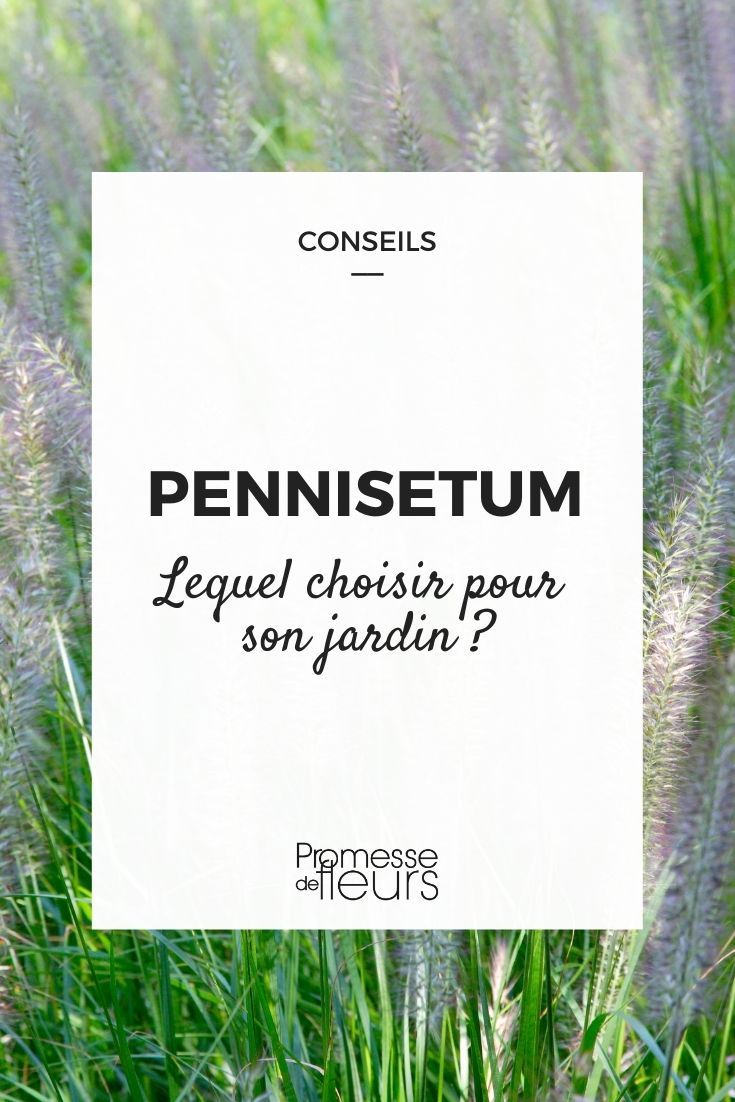































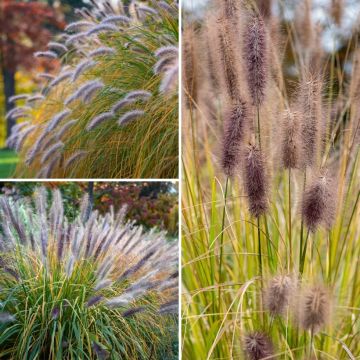
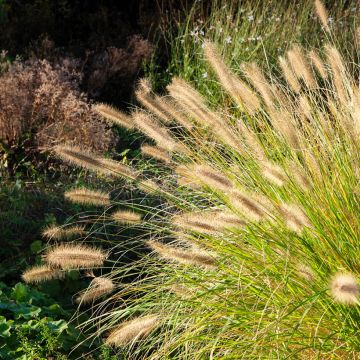
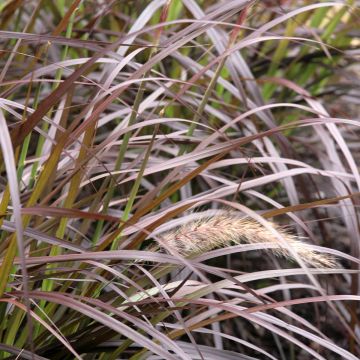

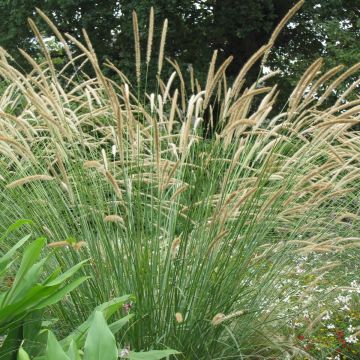
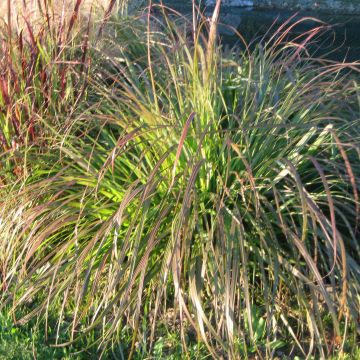
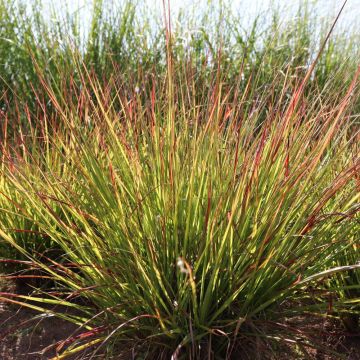
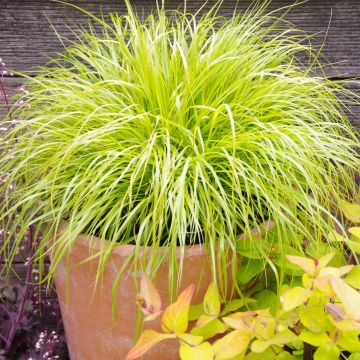
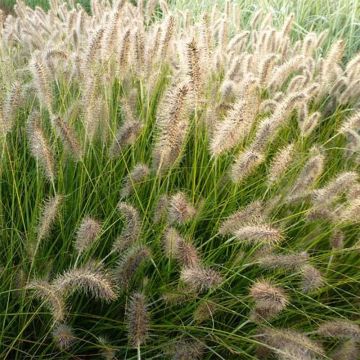
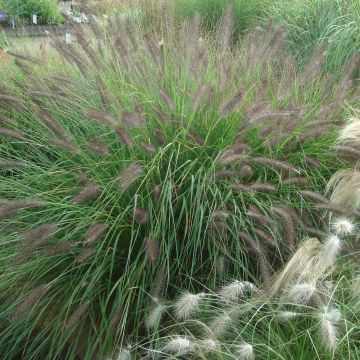
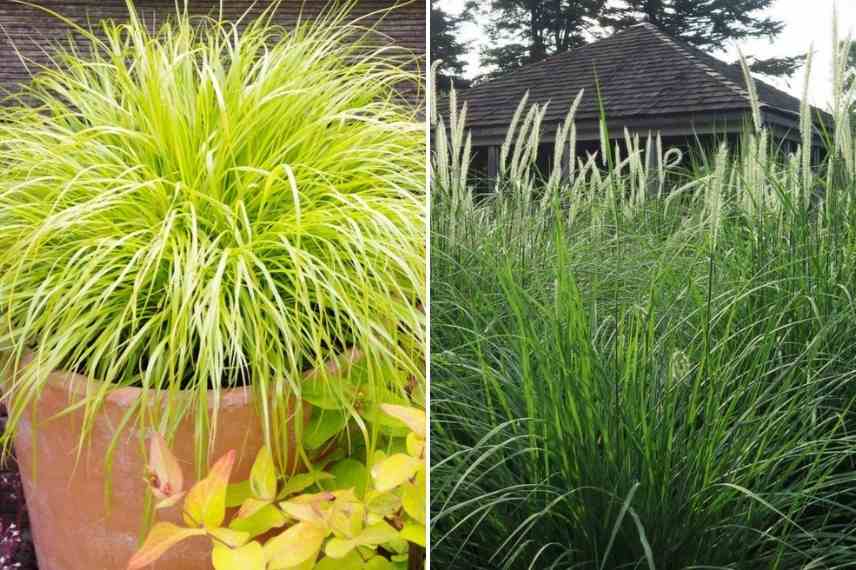

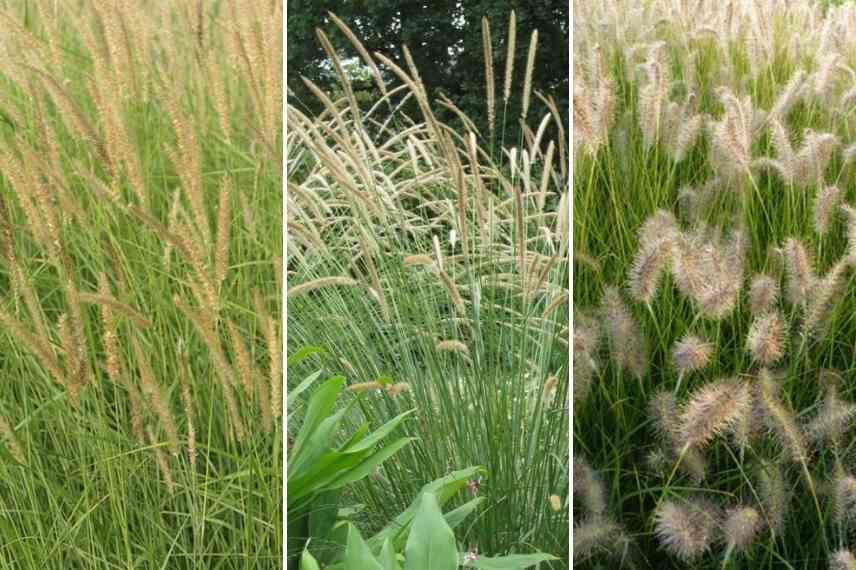
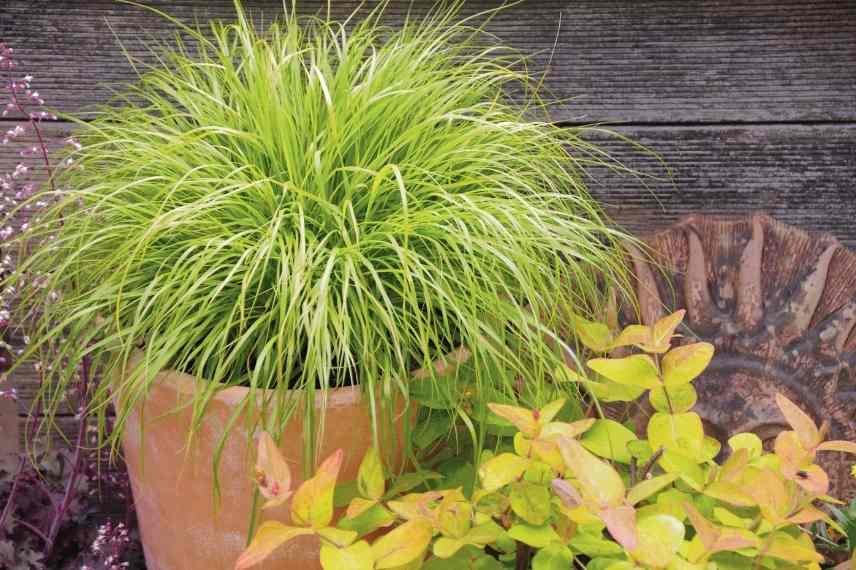
Comments